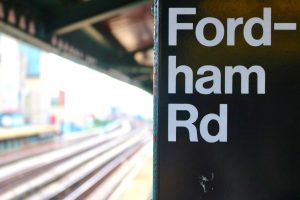By Sean Franklin

If Manhattan is New York City’s heart, then the subway is its arteries. It keeps the city’s blood flowing, moving people from home to work to school to the store and back again. It is absolutely essential in keeping New York functioning. But if you’ve ridden the subway recently, you probably know that it is not in good shape. Decades of mismanagement and poor maintenance have put the subway on its last legs, even as the city grows and its economy booms. Fixing the subways should be one of the city’s top priorities – if the subway stops functioning, then the city will as well. Here’s how we can prevent that from happening.
- Upgrade the signaling system.
Signals are, in a simple sense, the traffic lights of the subway. They prevent the trains from crashing into each other, keeping passengers safe. But they haven’t been upgraded since the 1930s. Because of that, they break. A lot. If a signal breaks, train service grinds to a halt, and a maintenance crew has to come down and fix the signal before traffic can start moving again. This is a process that can take hours, and it ripples outward along the line, like a traffic jam on a crowded highway. If you check the MTA’s service status website (www.mta.info), you will notice that the most common cause of delays is “signal problems.”
The subway system is painfully outdated, and maintenance on it is difficult because a lot of its parts are not even manufactured anymore. The MTA should upgrade to a Communications-Based Train Control (CBTC) system, as many subway systems around the world, from London to Paris to Tokyo have already done. Instead of separating the track into blocks, like the current system, the system equips all the trains and the tracks, with equipment that allows them to communicate with a central control center. This tells the control center where every train is at any time, and automatically adjusts their speed accordingly. It would significantly reduce delays and allow the MTA to run more trains (something that, given the recent spate of overcrowding, it desperately needs). This technology works – it’s already in operation on the L line, and is scheduled to debut on the 7 line in 2019. However, these projects have taken years and been plagued with cost overruns.
- Reduce Costs.
The first phase of the Second Avenue subway opened in 2017, at a cost of $2.5 billion per mile. In contrast, in Paris, the extension of Metro line 14 cost only $450 million per mile. The MTA pays a patently ludicrous amount for its capital projects. There are myriad reasons for this, but by far the most salient are corruption and lack of competition. The MTA received only two bids from companies to build the Second Avenue subway tunnels. The Paris project, by comparison, received at least half a dozen bids for every part of the project. Notably, companies that are rewarded MTA contracts are almost always the ones that donate millions of dollars to state politicians.
When construction companies don’t have competition, and when they have the Albany politicians in their pocket, they don’t have any incentive to reduce costs. Therefore, costs balloon. Workers are paid to do nothing. Contractors hire hundreds of outside consultants for dubious reasons. The MTA, with its opaque, intractable bureaucracy, does not help the situation. Sometimes it will change its plans in the middle of a project. It struggles to coordinate between contractors. Projects aren’t managed efficiently, and costs go up.
The MTA should do two things. First, it should encourage more competition among contractors for projects and try to attract bids from companies beyond its usual pool of two or three donor-heavy firms. Second, it should manage projects more efficiently, communicating and coordinating between separate contractors to keep costs under control. That way, it could actually make the upgrades (like CBTC) to the system that it needs without breaking the bank. This can only be accomplished in one way:
- A change in management.
Contrary to popular belief, the subway system is not actually run by the city. The MTA is run by state government, particularly Governor Andrew Cuomo. Cuomo has consistently shown that he is more interested in using the subway to score political points than he is interested in fixing it. He, and countless governors before him, has taken money away from the MTA to pay for other pet projects. Cuomo infamously once used $5 million of MTA money to bail out ski resorts upstate. He is more interested in flashy new technology than making sure the subway actually functions properly. Under his leadership, the system has installed Wi-Fi and USB ports in stations that have track signals dating back to the Hoover administration.
Frankly, the best way to fix the problems listed in this article is to replace Cuomo with someone who cares. Control of the subway should be turned over to the city. That way, the only government accountable for the system’s functioning is the one that its riders elect. The subway has huge and far-reaching problems. Until the MTA gets its act together, those problems are only going to get worse. Things need to change, and the only way the MTA will get its act together is if the government holds it accountable.
Sean Franklin, FCRH ’21, is an urban studies major from Alexandria, Virginia.


































































































































































































